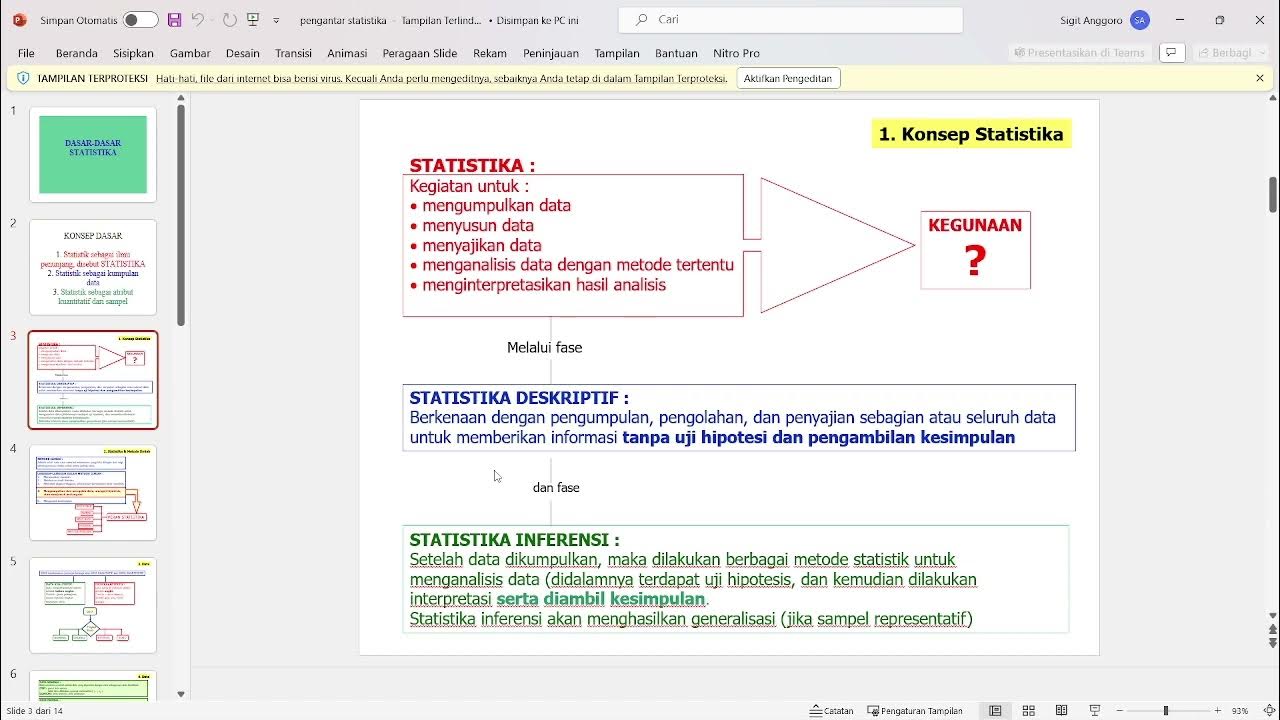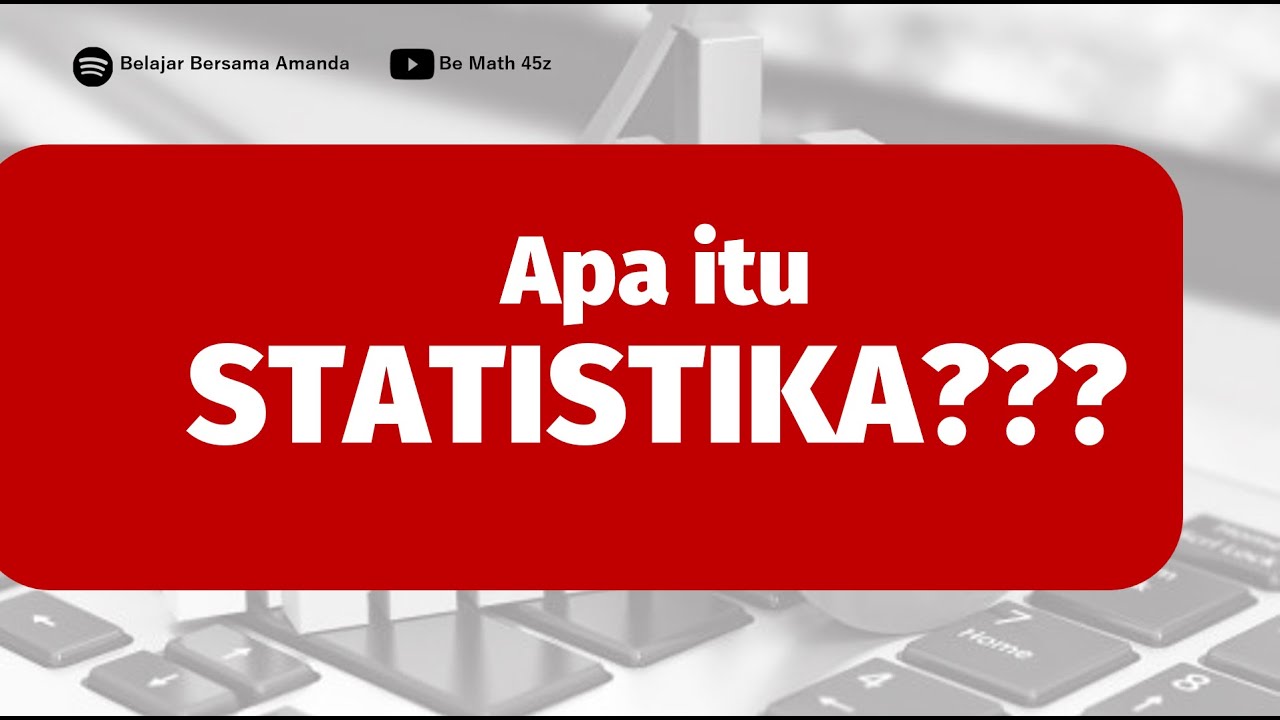Estadística | Concepto y clasificación
Summary
TLDRStatistics is the science of collecting, organizing, and interpreting data to make better decisions. The video highlights its applications in sports, healthcare, urban planning, and artificial intelligence. It explains the distinction between descriptive statistics, which analyzes entire populations, and inferential statistics, which studies samples to draw conclusions. Real-world examples include tracking soccer team performance, calculating the number of vaccines for a health center, and predicting construction needs in a city. The video also offers exercises on identifying different types of statistics based on given scenarios.
Takeaways
- 📊 Statistics is the science of collecting, organizing, and interpreting data to make better decisions.
- ⚽ In sports, statistics track team performance, such as goals, wins, losses, and ties, helping teams assess their chances in tournaments.
- 💉 Statistics are crucial in healthcare, helping to determine the number of vaccines needed in a health center to optimize resources.
- 🏡 For urban planning, statistics help project construction needs by analyzing data like population, age, and economic levels.
- 🤖 Artificial intelligence relies on organized data to create algorithms that automate tasks, highlighting the growing importance of statistics.
- 📈 Descriptive statistics focus on analyzing data from an entire population to extract conclusions.
- 📉 Inferential statistics analyze a sample of data to draw conclusions about a larger population.
- 💼 Examples of descriptive statistics include monthly sales reports, which help companies make future decisions.
- 🎓 Descriptive statistics also help evaluate student performance by analyzing attendance, grades, and participation data.
- 📝 Inferential statistics are used when studying large populations, such as determining literacy rates in a city by analyzing a sample.
Q & A
What is the primary goal of statistics?
-The primary goal of statistics is to collect, organize, and interpret data to make better decisions and understand the meaning of the data.
How is statistics applied in sports?
-In sports, statistics is used to track results like goals scored, games won, lost, or drawn. This helps determine if a team advances to the next round of a tournament.
Why is statistics important in healthcare, particularly for vaccine distribution?
-Statistics is crucial in healthcare for determining how many vaccines are needed in a health center. Sending a random number of vaccines could lead to shortages or excess, so data on population size, age, and health conditions is essential to optimize resources.
How does statistics contribute to urban planning?
-In urban planning, statistics is used to project constructions in a locality by analyzing data such as population size, economic level, and age distribution. This helps in planning the construction of houses, parks, schools, and commercial areas.
What role does statistics play in artificial intelligence?
-In artificial intelligence, statistics is used to organize data into categories, which helps create new algorithms to automate tasks.
What is the difference between descriptive and inferential statistics?
-Descriptive statistics studies an entire population, while inferential statistics studies a sample from the population to make conclusions about the larger group.
Can you provide an example of descriptive statistics in sales analysis?
-An example of descriptive statistics in sales analysis would be creating monthly sales reports based on data such as the number of items sold, unit prices, and total sales per item. This information helps in making future business decisions.
How can descriptive statistics be used to evaluate student performance?
-Descriptive statistics can be used to analyze student performance by examining data such as attendance, grades, and participation. This provides insights into the performance of individual students and the overall school.
How is descriptive statistics applied in sports team analysis?
-Descriptive statistics can be applied to a sports team by analyzing data like player costs, game outcomes, and tournament appearances. This data helps teams make informed decisions about future strategies.
What makes inferential statistics useful in large-scale surveys like literacy rates in a city?
-Inferential statistics is useful in large-scale surveys, such as literacy rates in a city, because it allows for conclusions to be drawn from a sample of the population, saving time and resources while providing reliable insights.
Outlines

Этот раздел доступен только подписчикам платных тарифов. Пожалуйста, перейдите на платный тариф для доступа.
Перейти на платный тарифMindmap

Этот раздел доступен только подписчикам платных тарифов. Пожалуйста, перейдите на платный тариф для доступа.
Перейти на платный тарифKeywords

Этот раздел доступен только подписчикам платных тарифов. Пожалуйста, перейдите на платный тариф для доступа.
Перейти на платный тарифHighlights

Этот раздел доступен только подписчикам платных тарифов. Пожалуйста, перейдите на платный тариф для доступа.
Перейти на платный тарифTranscripts

Этот раздел доступен только подписчикам платных тарифов. Пожалуйста, перейдите на платный тариф для доступа.
Перейти на платный тариф5.0 / 5 (0 votes)






